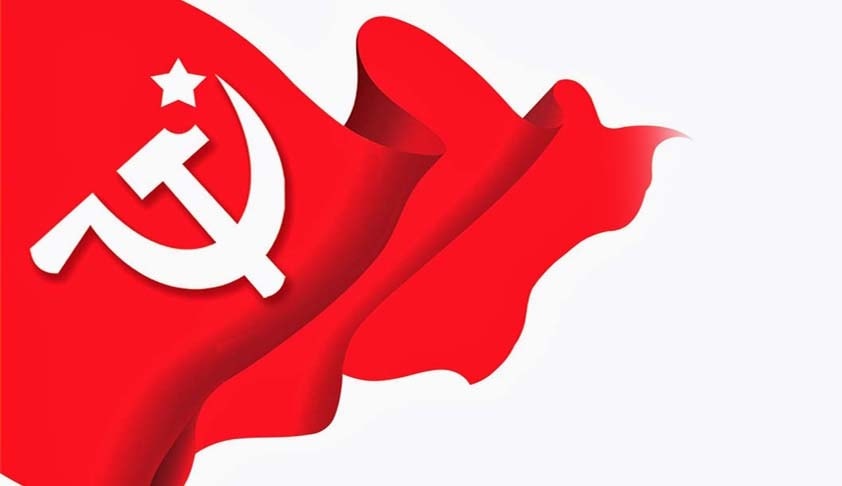
PRIME Minister Modi’s visit to the White House on February 13 was meant to illustrate how close Modi was to his friend, Donald Trump, and to bask over the photo-op that it presented. Instead, what Modi’s short visit to Washington underlined was the subaltern status that India has been reduced to under Modi’s watch.
There was no tearing hurry for the Indian prime minister to have an official meeting with President Trump. After failing to get an invitation to the inauguration ceremony on January 20, the government should have waited to see how Trump settles down in the White House and the direction of policies that he was going to unfold, many of which were expected to cause an upheaval in international relations. But the instinct of Modi and the BJP rulers is to show how close they are to the United States – a sure indication for them that India is becoming a global power. So Modi ended up being the fourth foreign leader to meet Trump within a month of his being president. The other three being the leaders of Israel, Japan and Jordan – all close allies of the United States.
Modi’s official meeting with Trump in the White House was preceded by Trump’s announcement, a few hours earlier, of “reciprocal tariffs” on all countries, including India. By this, Trump announced that the US would levy tariffs equivalent to the tariffs levied on American goods by any country. Further, Trump emphasized that India has the highest tariffs in the joint press conference held with Modi after the meeting.
The joint statement issued by the two leaders makes it clear that Trump had succeeded in putting forth his demands and issues in the bilateral relations between the USA and India. Given the 45.7 billion dollar trade deficit on the US side, out of a total of 130 billion dollar trade between the two countries, Trump got India to commit to import more American oil and gas from the United States and buy more American defence equipment. The joint statement talks of streamlining defence trade and to better align procurement systems of defence goods and services.
In order to please Trump, India will have to buy more expensive oil and gas from America, which will burden its oil import bill. It is much cheaper for India to buy Russian oil and gas as it is doing now. Acting on the American diktats, India had ceased to buy crude oil from Iran, which was cheaper and of better quality.
The Trump administration has now committed India to negotiate a new ten-year defence framework agreement, which will bind India strategically and militarily closer to the United States. The offer to sell F-35 stealth planes to India is something which should worry the Modi government. These exorbitantly expensive fighter planes and their maintenance is something which cannot be sustained by the defence budget of this country. But Modi will find it difficult to turn down this offer. Trump announced in the joint press conference that there will be “billions of dollars of sales” to India.
One of the concerns of the Modi regime was to ensure that Trump continues to accord importance to the Quad and the Indo-Pacific strategy. The joint statement talks of hosting President Trump in New Delhi for the Quad leaders’ summit, something Modi fervently wishes for.
The US and India planned to review trade relations and reach at the first tranche of a bilateral trade agreement, but this can be a double-edged sword for India. The Trump administration would go into all aspects of investment and trade, including India’s data protection rules, subsidies, tax regime and regulatory actions, which favour domestic businesses over foreign businesses. Trump’s intention would be to prise open India’s economy for American goods while imposing a protectionist wall around the US economy.
Anticipating US pressure to facilitate the buying of US nuclear reactors, the Modi government had already announced that it intends to amend the Civil Nuclear Liability law. The joint statement talks about speeding up of the sale of six Westinghouse nuclear reactors to India. Here again, the Modi government is doing away with the liability of suppliers of nuclear reactors in the case of nuclear accidents, thereby betraying the lives and safety of Indians.
The other glaring aspect of the Modi visit is the failure to ensure fair and humane treatment of the Indians being deported from America for illegal entry. When the first batch of Indians were sent back in a military plane handcuffed and feet shackled, there was outrage in India. Shamefully, Foreign Minister Jaishankar told Parliament that it was as per standard operating procedure of the American authorities. Modi was expected to take up the matter with Trump. If he did so, which is doubtful, it has had no effect. After the Modi visit, two more plane loads of deportees have arrived in Amritsar, manacled and handcuffed. The contrast with the firm, self-respecting stand taken by the Colombian and Mexican Presidents is striking.
Finally, the Washington visit was a signal that Modi is on the same wavelength as Trump with his extreme rightwing policies and aggressive imperialism. The Indian government has not reacted to Trump’s startling announcement that the United States should take over Gaza and develop it by displacing all the Palestinians living there. If Netanyahu was delighted at Trump’s announcement of this at their joint press conference, Modi could not have expressed any disagreement to Trump over this gross violation of international law. After all Trump, Netanyahu and Modi are all birds with the same ideological feathers.
(February 19, 2025)


